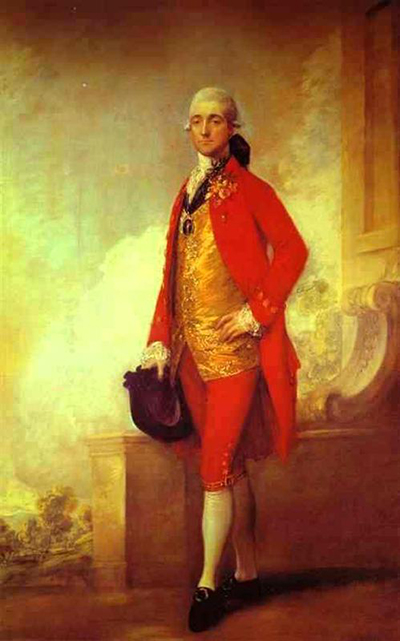The portrait of Captain William Wade was painted by Thomas Gainsborough in 1771 as a gift to the new Assembly Rooms. The portrait was to reside in the Octagon Rooms, where it still resides today.
It is a portrait of Captain Wade dressed in a red silk suit, a gold waistcoat, holding a hat, and wearing his medallion badge on a blue ribbon on his neck. The original painting had a rural landscape as its background. However, Gainsborough altered that piece and painted over the landscape with steps and a balustrade. From 1976 to 1977, Captain William Wade was the acting Master of Ceremony at the Bath's Assembly Rooms. His main duty was to ensure protocol prevailed and that people conducted themselves in acceptable behaviours during balls at the Assembly Rooms.
His elegance is depicted by the fashionable clothes he is wearing, and also his pose. Thomas Gainsborough painted this piece when he had settled in Bath. Gainsborough has settled in here between 1759 to 1774 where he made a living out of painting portraits for wealthy clients and visitors. The portrait of Captain William Wade was commissioned by the proprietors of the assembly rooms. Gainsborough saw this as a huge opportunity to advertise his talents to high-profile figures visiting the Assembly Rooms. The subject in this painting, William Wade was born in 1733. He was the nephew of Field Marshal George Wade, who was a member of Parliament for Bath, and was also renowned for building many military roads in Scotland.
William Wade who had a career in the army, was named as the Master of Ceremonies in 1769 while holding the rank of Captain. He succeeded Beau Nash, although the position at the time was not official. When Wade was being appointed, the position had been made official and subscribers were to conduct an election to choose a Master of Ceremonies. Captain Wade held this position until 1771 when he was implicated in a divorce scandal, which cost him his position. However, he would go on and work a Master of Ceremonies at Brighton.




